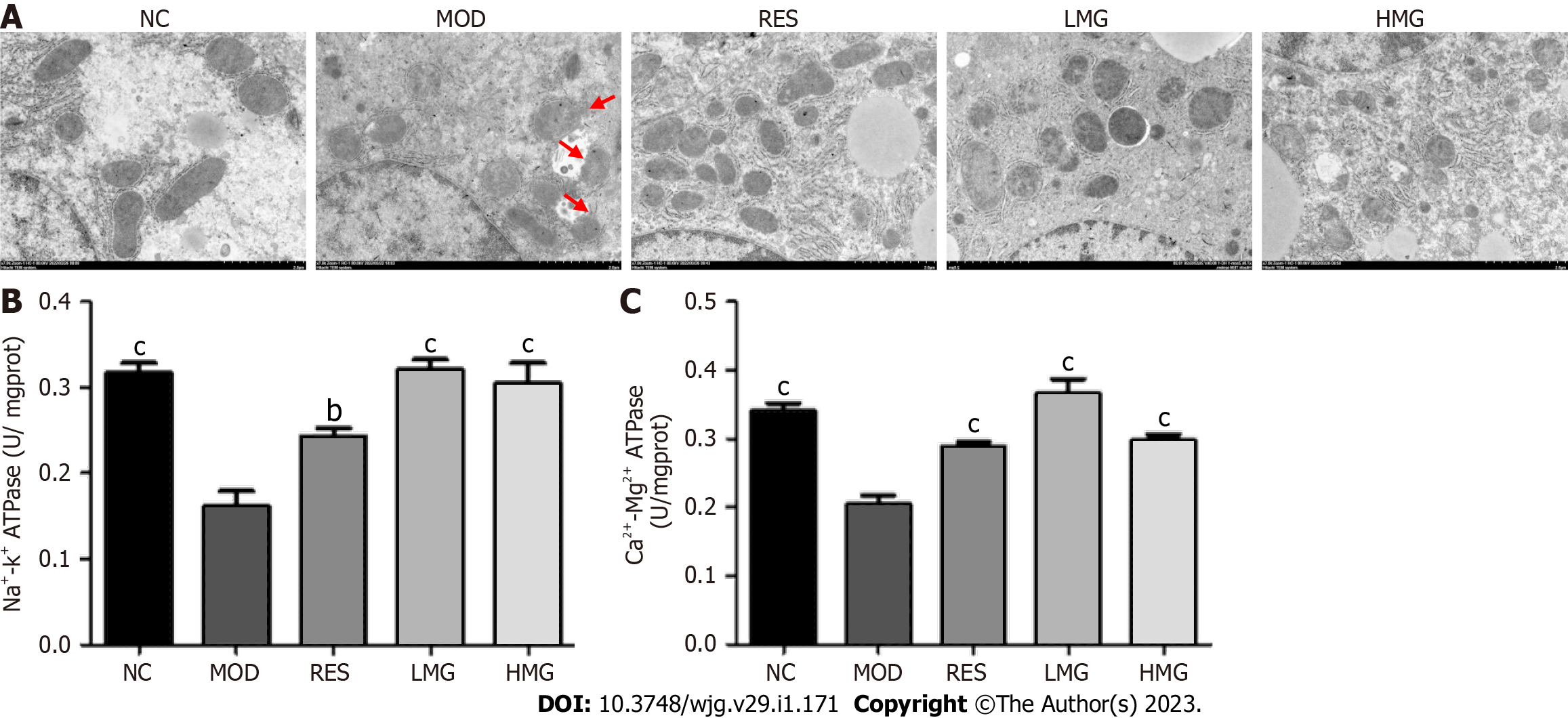Copyright
©The Author(s) 2023.
World J Gastroenterol. Jan 7, 2023; 29(1): 171-189
Published online Jan 7, 2023. doi: 10.3748/wjg.v29.i1.171
Published online Jan 7, 2023. doi: 10.3748/wjg.v29.i1.171
Figure 10 Effects of Polygonum multiflorum-derived monomer group in liver mitochondria on mitochondrial status in the liver from high-fat diet-fed mice.
Mice were administered saline, Polygonum multiflorum-derived monomer groups (30, and 90 mg/kg/d), or resveratrol (18 mg/kg/d). After 3 mo of high-fat diet feeding, mice were sacrificed, and livers were harvested for mitochondrial ultrastructure observations and mitochondrial isolations. A: Mitochondria were assessed by transmission electron microscope (original magnification × 30000; bar = 500 nm); B: Levels of Na+-K+-ATPase in isolated liver mitochondria were determined using a commercial kit; C: Levels of Ca2+-Mg2+-ATPase in isolated liver mitochondria were determined using a commercial kit. Values represent the mean ± SD from six animals. aP < 0.05, bP < 0.01, cP < 0.001 vs the relevant model group. ATPase: ATP synthase; HMG: High-dose Polygonum multiflorum-derived monomer group; LMG: Low-dose Polygonum multiflorum-derived monomer group; MOD: Model; NC: Normal control; RES: Resveratrol.
- Citation: Yu LP, Li YJ, Wang T, Tao YX, Zhang M, Gu W, Yu J, Yang XX. In vivo recognition of bioactive substances of Polygonum multiflorum for protecting mitochondria against metabolic dysfunction-associated fatty liver disease. World J Gastroenterol 2023; 29(1): 171-189
- URL: https://www.wjgnet.com/1007-9327/full/v29/i1/171.htm
- DOI: https://dx.doi.org/10.3748/wjg.v29.i1.171









